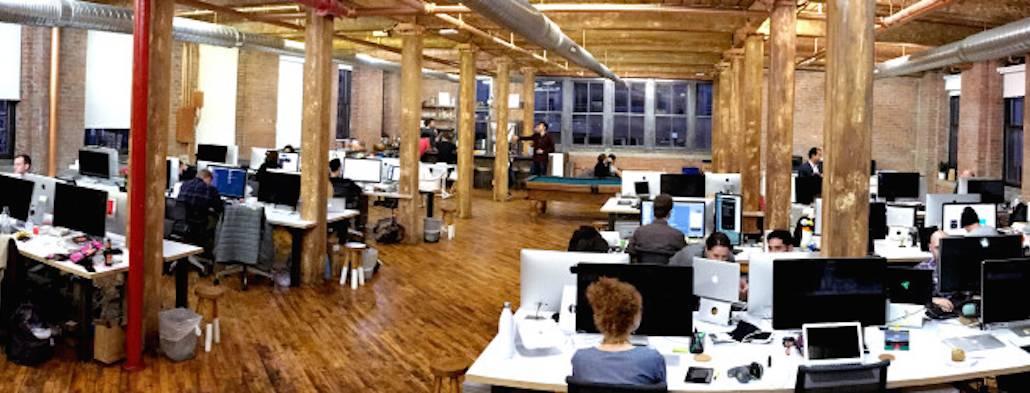Save 50% on a 3-month Digiday+ membership. Ends Dec 5.

Lindsey Kaufman was working at an agency in 2014 when her office underwent a big renovation. A cubicle farm office set-up was torn up to make way for the major hallmark of a modern office: an open floor plan. And that’s when the distractions started.
“I hated it,” said Kaufman, who has since quit to go freelance. (The floor plan didn’t have anything to do with it, she says.) As a creative with self-diagnosed ADD, she said keeping her butt in the chair was hard enough. Add in the people stopping by when she was in the middle of a task, and it was impossible to get work done.
Open office plans are a hallmark of modern corporate life, thought to breed creativity and collaboration. And it’s cheaper than having offices since it lets companies maximize their use of space. But the open plan, like most things, isn’t for everyone.
Huge, which is in the middle of a large-scale renovation of its Brooklyn office, also recognizes the limitations of the open floor plan. While the agency will keep an open plan, it’s mindful of the challenges it brings to productivity and will incorporate meetings rooms and lounges to give people what it calls “safe spaces” to escape to, said Sam Weston, director of communications.
At 360i, the agency has become more cognizant of the effects of the open plan on one specific group of people: the tech folks. Knowing that they often need privacy and solitude, the shop opened a “tech lab” that they sit in that affords some level of privacy while still feeling like it’s part of the whole office. The agency has also added smaller rooms for people to sit in.
Hachette Publishing moved away from corner offices, but held on to its cubicles, because book-editing demands solitude.
The concept of an open office isn’t new: It first came about in the 1950s when a German team decided it would improve communication. Some agencies caught the bug faster: In 1999, Wired wrote about how TBWA/Chiat/Day’s former boss Jay Chiat got rid of desks and cubicles and let employees work from anywhere. It was open plan taken to the max.
Ad position: web_incontent_pos1
But as The New Yorker wrote, open office plans actually decreased satisfaction and resulted in more disruptive and unproductive workspaces.
One media agency employee said that he hates his office’s open plan. There are no secrets, for one thing. “People know when I get in and when I leave. And in an industry where ‘face time’ is everything, I’m forced to work longer hours simply because I should just be seen as present.” This employee used to have a cubicle that minimized that issue — and also afforded some level of distraction-free time to himself.
Studies have over and over again linked physical privacy to psychological well-being — and while those in open offices may feel like they’re part of a cool, laid-back workspace, the fact is that open offices kill productivity and made people feel like they couldn’t control their surroundings. (They also were found to increase sickness in the office.)
For Kaufman, things have gotten worse. Since going freelance, she works at multiple agencies — all of which have open floor plans. It’s a major talking point for her: She has written on the topic extensively and is about to speak on it at a marketing conference. “Sure, it’s collaborative, but we can just meet in the open space and then go back to our cubicles,” she said. “This is not how we’re programmed as people.”
Photo courtesy Work&Co
More in Marketing

Ulta, Best Buy and Adidas dominate AI holiday shopping mentions
The brands that are seeing the biggest boost from this shift in consumer behavior are some of the biggest retailers.

U.K. retailer Boots leads brand efforts to invest in ad creative’s data layer
For media dollars to make an impact, brands need ad creative that actually hits. More CMOs are investing in pre- and post-flight measurement.

‘AI is permeating everything we do’: How Guitar Center developed 2 AI tools this year
This summer, the company launched a chatbot called Rig Advisor to help customers find the right instruments and products.
Ad position: web_bfu


